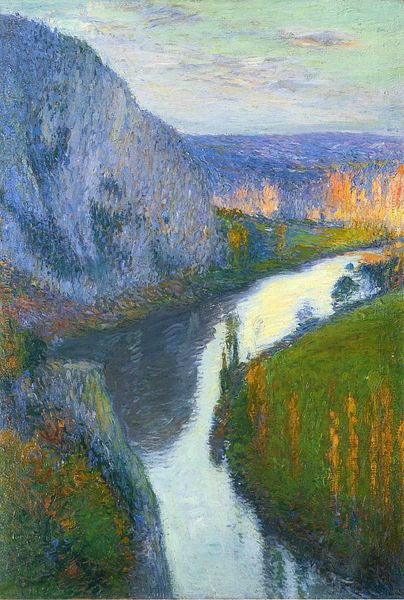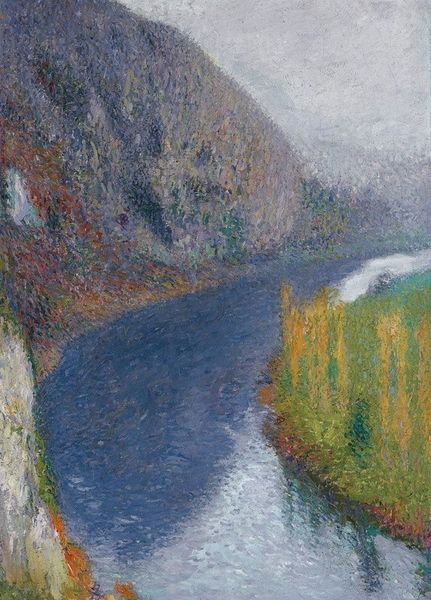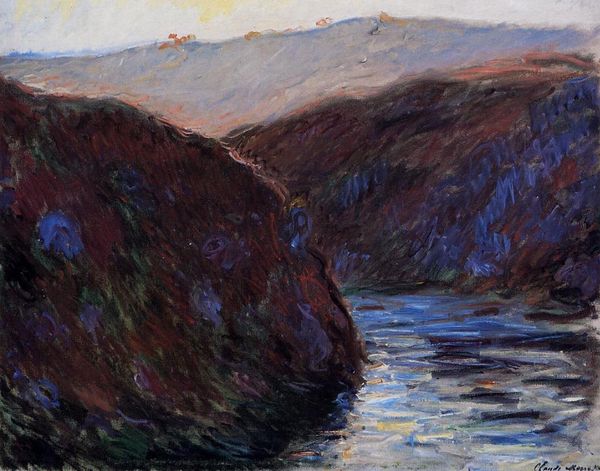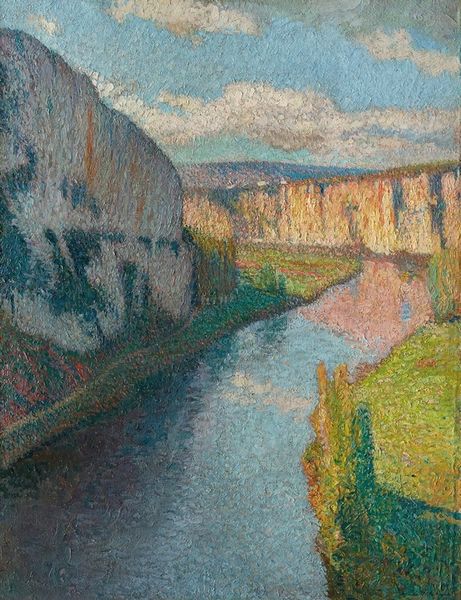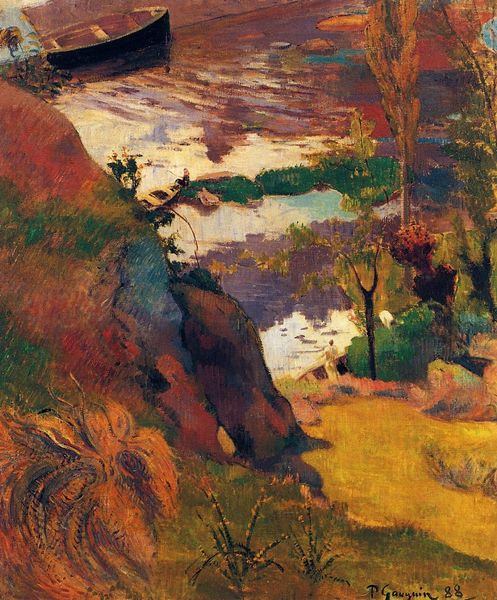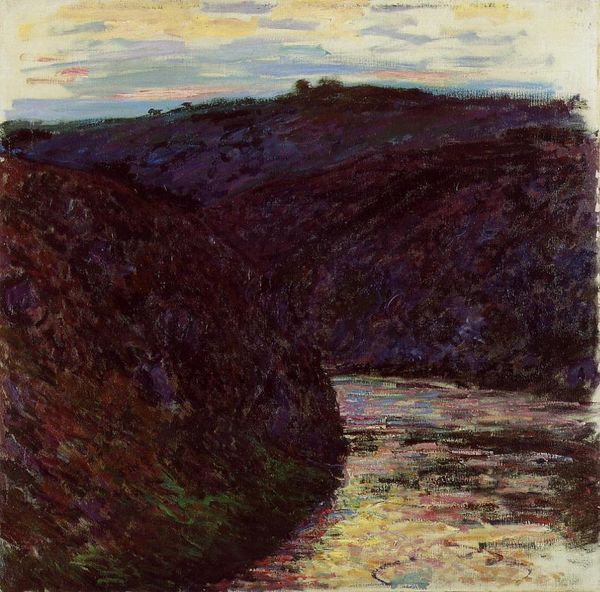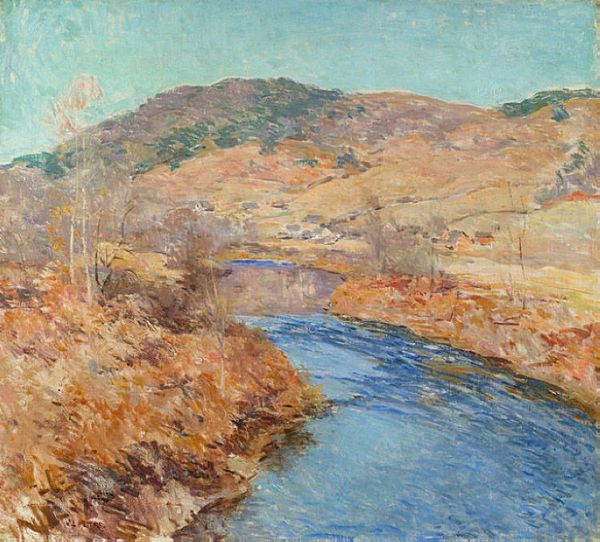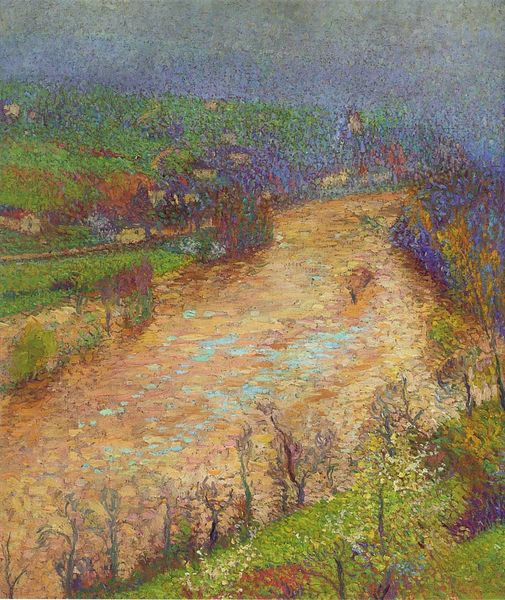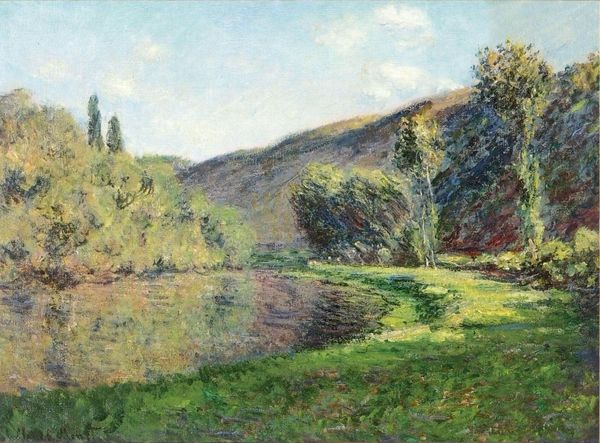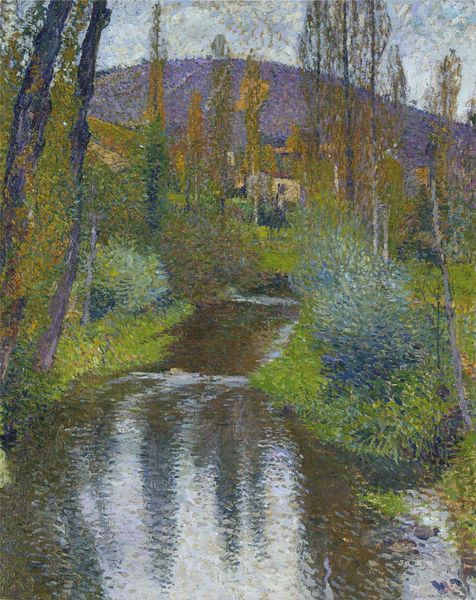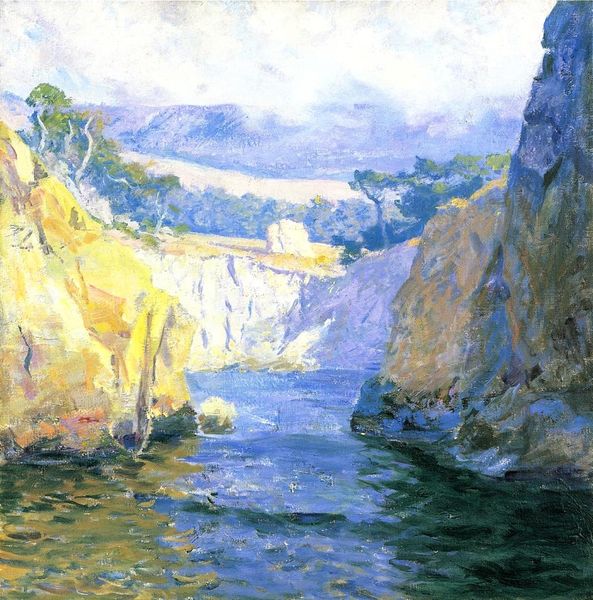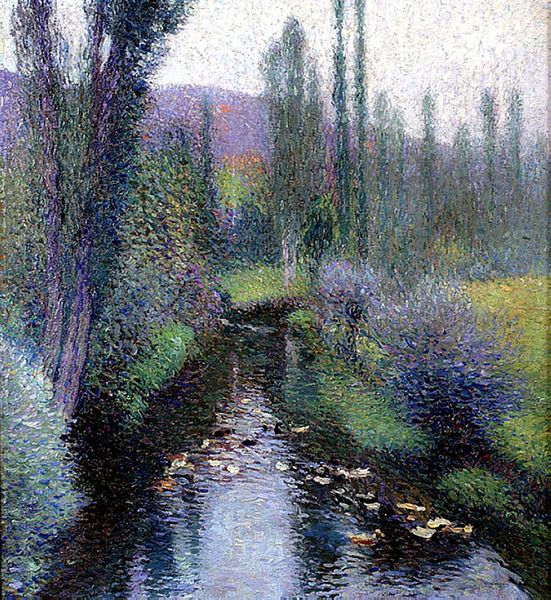
painting, oil-paint
#
painting
#
impressionism
#
oil-paint
#
landscape
#
river
#
impressionist landscape
#
oil painting
#
mountain
#
water
Copyright: Public domain
Curator: Henri Martin painted this piece titled "The Cliffs of Lot." The image depicts an area in France, rendered with techniques we strongly associate with Impressionism. Editor: My immediate reaction is a deep calmness. It’s almost meditative with its softened edges and restricted palette. Curator: Indeed. Martin came into his own in the 1880s, during Impressionism’s height. Notice how the surface is richly textured, built up from numerous tiny brushstrokes, with that fascinating interaction of color. The water flows diagonally through the frame to give the sense of being a sweeping and dynamic place. Editor: It makes me consider the very physicality of creating it – each touch of the brush, loading paint to form this reality that feels very… lived in. Not just an ideal, but actual, physical work to describe material. What’s interesting is how the technique serves the representation; rough touches for the mountains, smoother gradients for the river. Curator: And that physicality reflects its historical context as well. Post-Impressionist artists frequently showed an active engagement with the materials they use as a means to reject academic traditions while establishing modern means of artistic creation and production. Editor: I keep wanting to reach out and trace the marks. You see so much labor invested here, it transforms a scene into something almost tangible, as if you can smell the soil and dampness. What can this tell us about its initial reception? Curator: Initially, Martin found himself embraced by a section of the artistic avant-garde precisely because he moved beyond simple landscape, investing them with sentiment. Later critics have sometimes deemed this compromised by the conventional tastes of his buyers. We may want to investigate it in our day. Editor: I'm walking away seeing art here not only as an expression of natural beauty but also a testament to labor—physicality and materiality transformed through Martin’s unique artistic vision. Curator: Agreed. I think what strikes me now is Martin’s unique synthesis. He took Impressionist techniques to explore personal vision, revealing in a unique perspective during a transformative moment in the evolution of modern artistic practice.
Comments
No comments
Be the first to comment and join the conversation on the ultimate creative platform.
